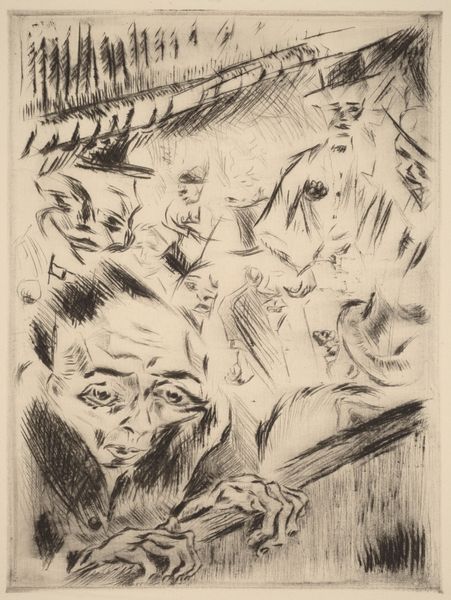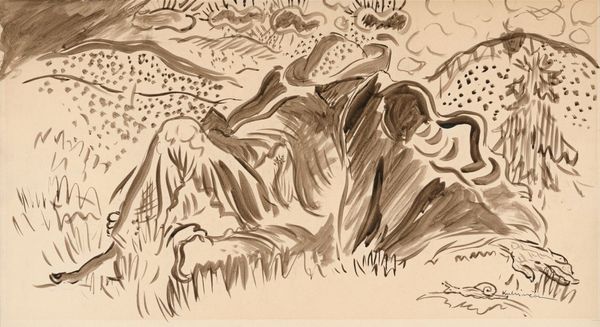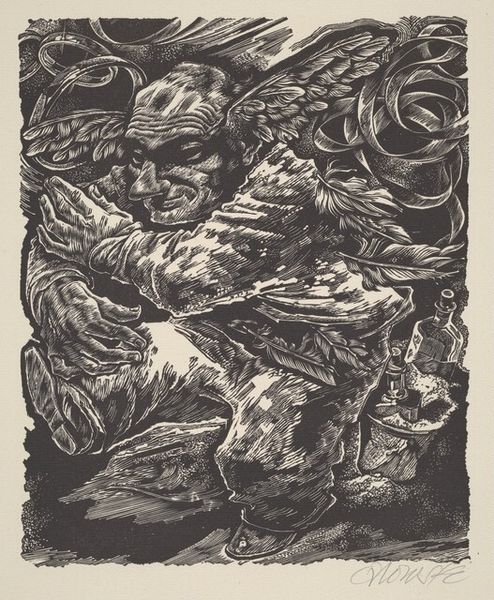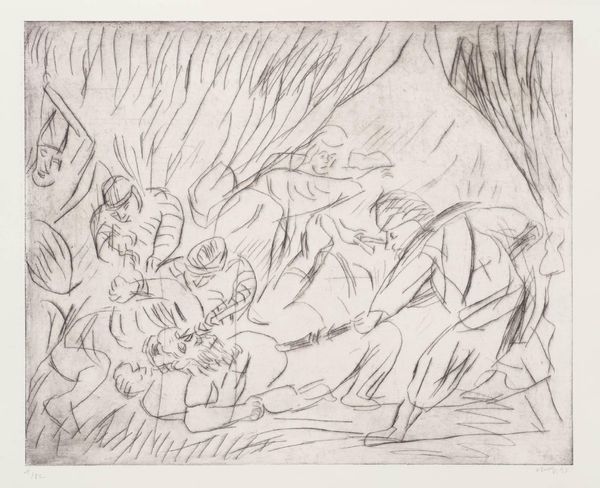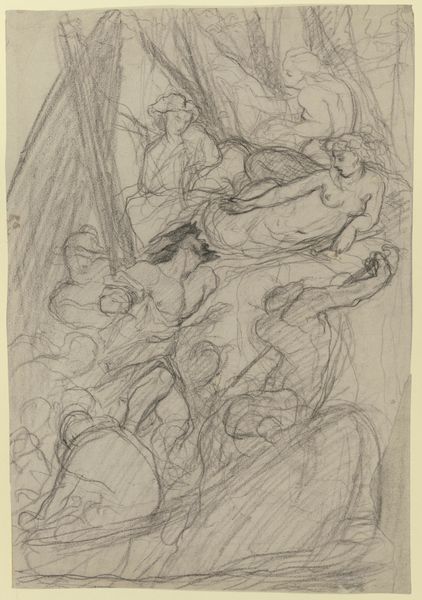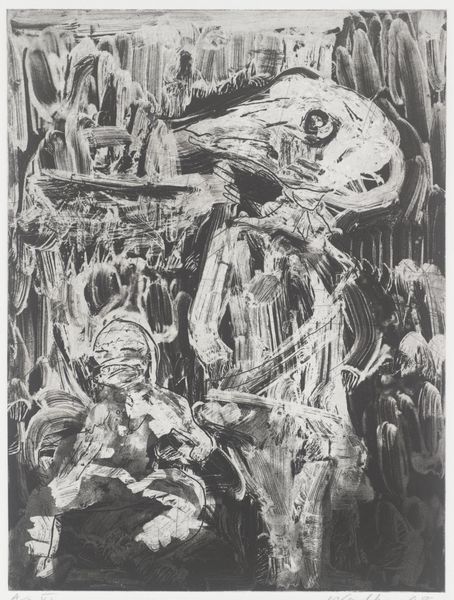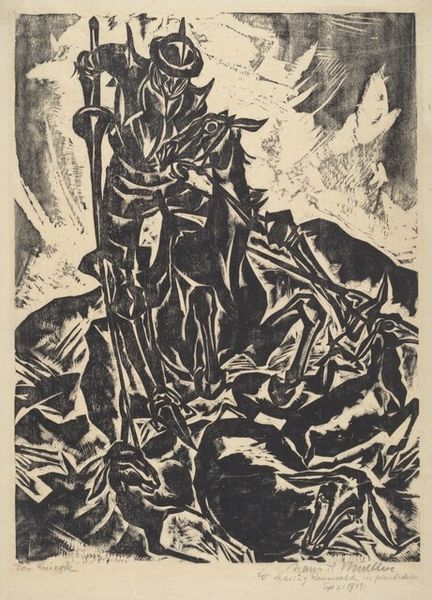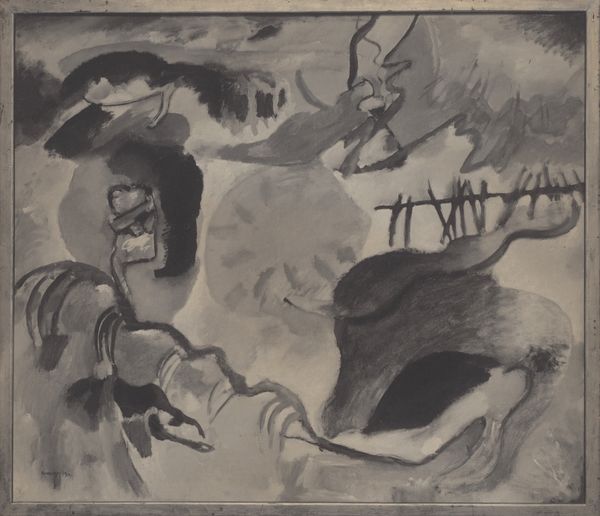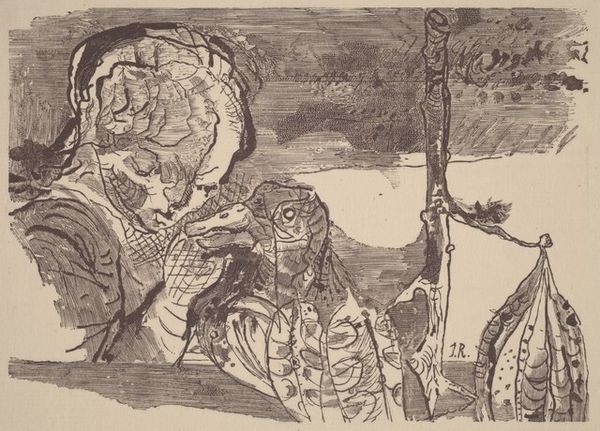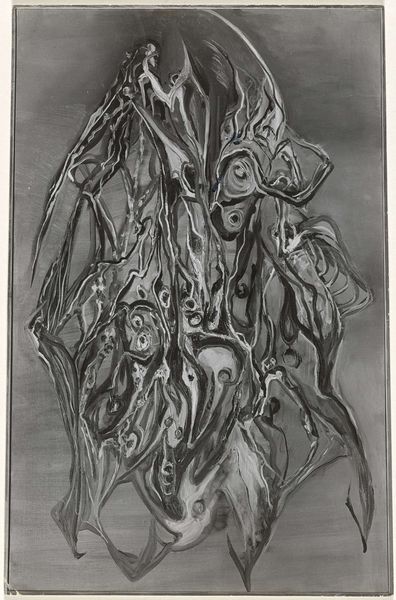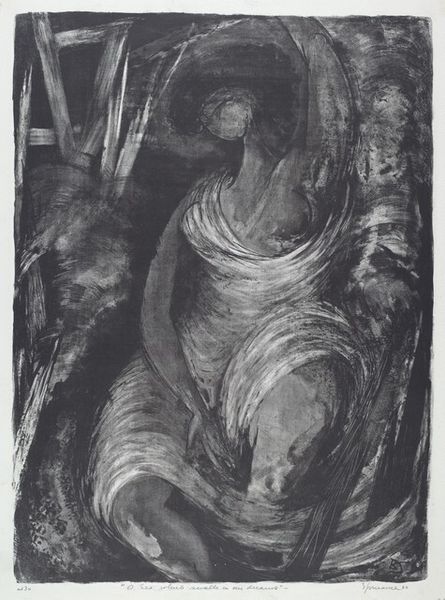
drawing, paper, ink
#
drawing
#
new-objectivity
#
ink drawing
#
narrative-art
#
figuration
#
paper
#
ink
#
expressionism
Dimensions: overall: 39.9 x 39.5 cm (15 11/16 x 15 9/16 in.)
Copyright: National Gallery of Art: CC0 1.0
Curator: Oh, my goodness, this piece—Otto Dix's "Homunkulus" from 1918—feels like staring into a fever dream. The sheer intensity of the ink! It practically vibrates. Editor: Absolutely. Look at the relentless use of ink on paper, the almost violent crosshatching. It's a portrait of turmoil, a really visceral reaction laid bare. Curator: Indeed. You've got this enclosed figure in the center—a homunculus, a little man—completely vulnerable amidst a chaotic swirl. Almost as if the forces around him are pressing in, physically, viscerally as you mention. There's this raw, untamed energy. Editor: That’s the beauty and terror, I think, of expressionism boiled down to its essentials. It feels almost too immediate, but the paper gives it its structure and presence. Considering the war, this probably wasn't an artwork aimed for consumption or to please, just sheer outpouring on fragile cellulose support. Curator: You’re so right about the impact of that historical context, too. The war was ripping the world apart, and here's Dix translating that psychic landscape onto paper. I can practically smell the chemical reek from the dark, dense inks employed by the artist as a scream for peace. Editor: Thinking about that process, you’re right—the inks carry their own history, manufactured and distributed even during wartime, made into tools. Every stroke, born of available material and physical labour, mirrors larger anxieties around the cost of war in raw human experience. Curator: A poignant echo. I think Dix manages to transmute individual terror into universal grief and suffering using this raw materiality. The Homunculus feels like both everyman and nobody. Editor: Exactly. We began looking at ink and paper, we can end understanding Dix's deep commitment and material relationship to translate, critique, and respond to societal tragedy in real time, making his contribution incredibly unique. Curator: Yes! A powerful reminder of the burden of humanity and a humble testament to the power of artistic process under such great strain.
Comments
No comments
Be the first to comment and join the conversation on the ultimate creative platform.
